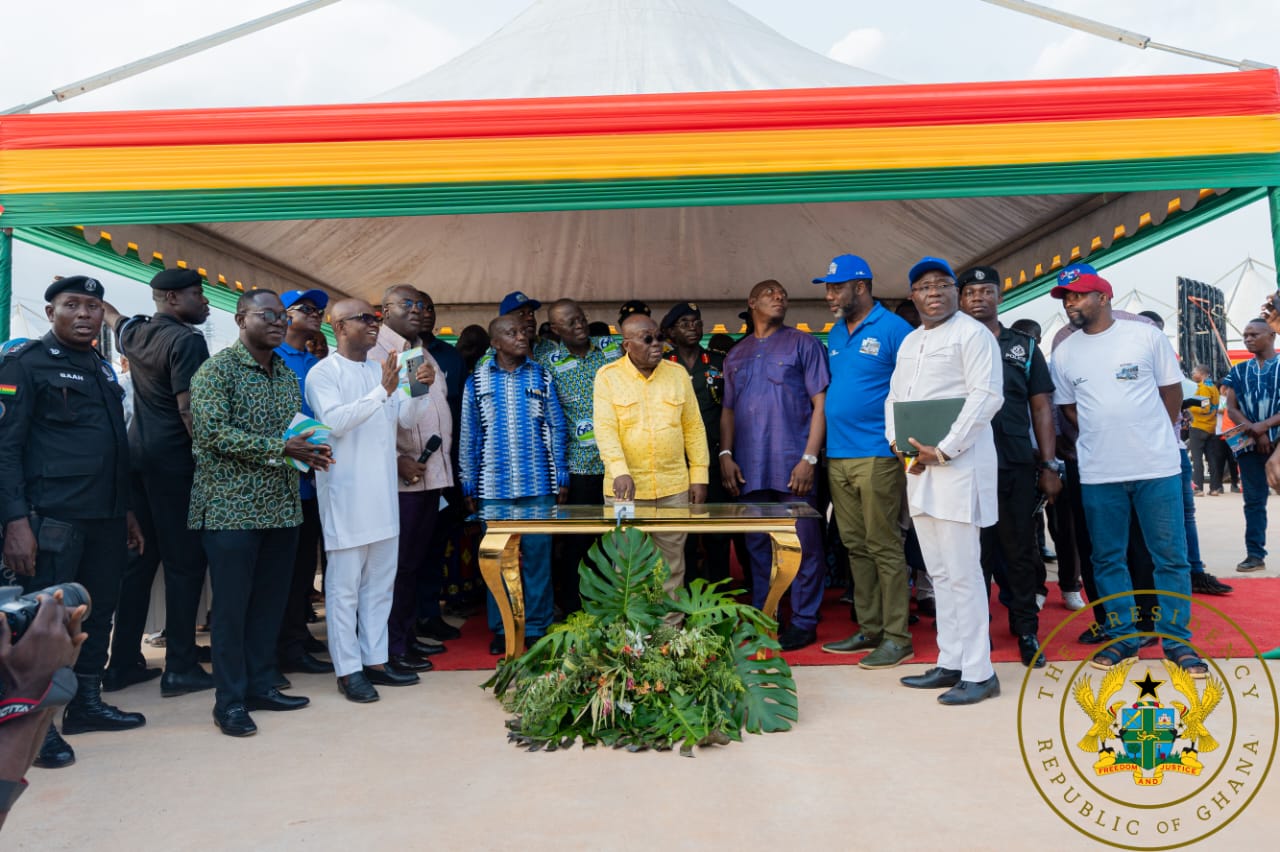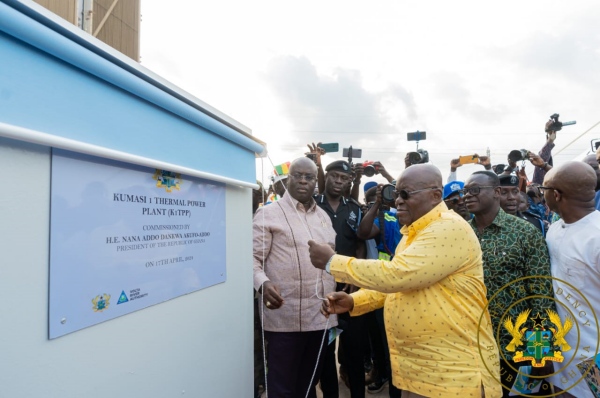President Akufo-Addo has commissioned the first phase of the One Hundred and Fifty megawatt Kumasi One Thermal Power Plant and the Genser Energy Kumasi Pipeline, located at Anwomaso in the Greater Kumasi Metropolitan Area.
Interdependently, the Anwomaso Gas Pipeline undertaken by Genser Energy has been constructed to feed the plant with natural gas from the Western Region.
The project, represents for the nation and particularly for inhabitants of the Ashanti Region, the innate quest of government to provide sustainable electricity to meet the growing needs of the ever-growing prospects of the region and a key testament of the Akufo-Addo government’s commitment to boosting energy supply to meet the expectations of Ghanaians.
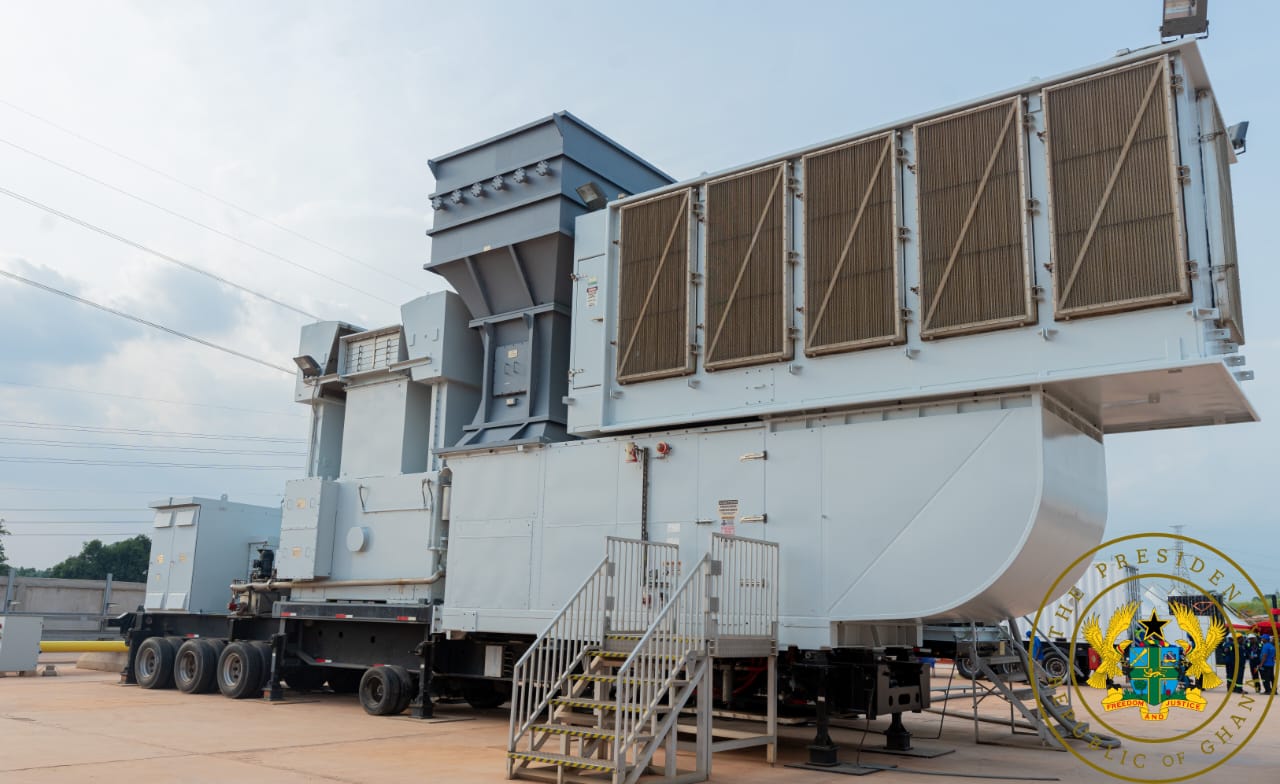
The first in Kumasi, and by extension the Ashanti Region, President Akufo-Addo spoke of the project as “very significant, as it will improve the delivery of electricity to the middle and northern belts of the country and serve as further confirmation, if any was needed, of government’s resolve to ensuring that all parts of the country have the necessary infrastructure for development.”
According to him, the renowned attribute of the Ashanti Region as a hub of small and medium scale commercial and industrial businesses will mean that, with enhanced electricity supply, these businesses will expand and offer employment opportunities to our youth.
He said, seven years of translating promises and assurances into result-oriented projects, including energy supply has required the delivery of affordable and reliable electricity to drive our nation’s industrialisation agenda, and position Ghana to become a net exporter of electricity in the ECOWAS region.
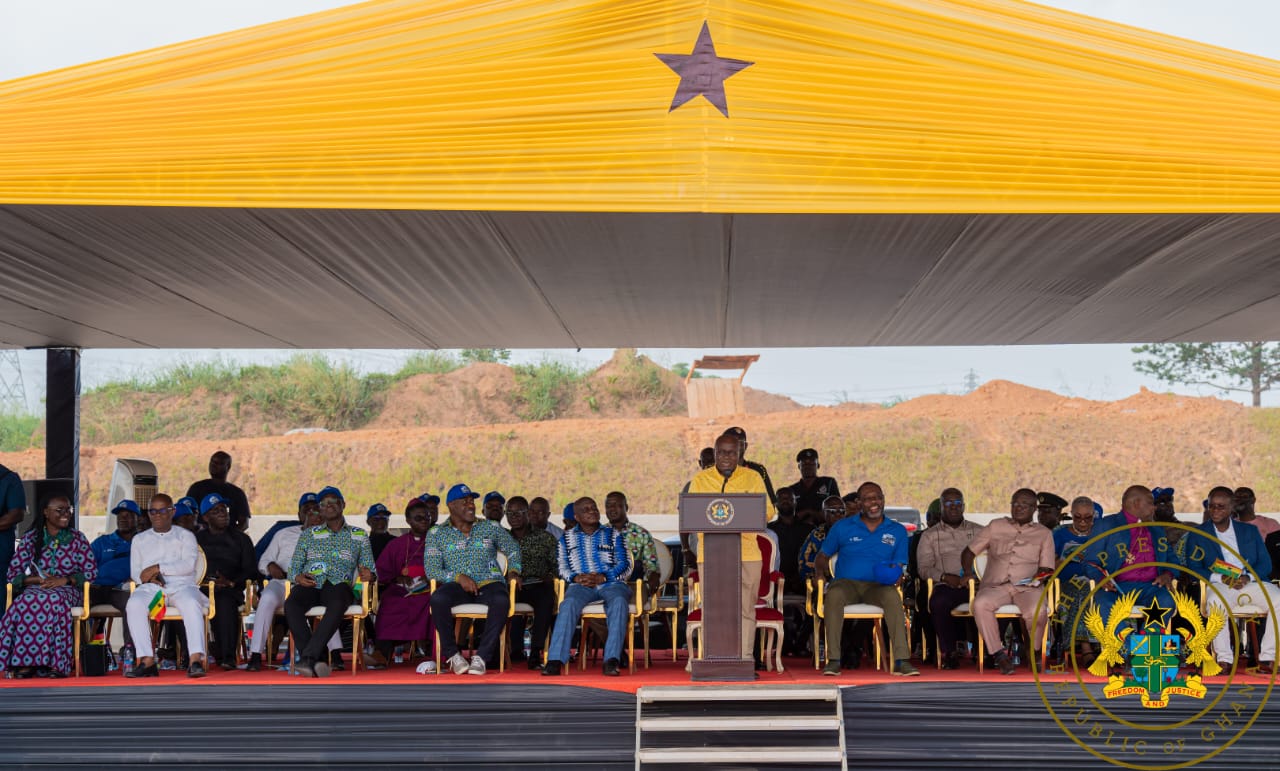
The President noted that, with the country’s national electrification rate of 88.8% one of the highest on the continent, the goal is to have full electricity access by the end of this year and ensure that the areas of power generation, transmission and distribution, recieves significant investments towards the provision of reliable and competitively-priced electricity to ensure economic growth.
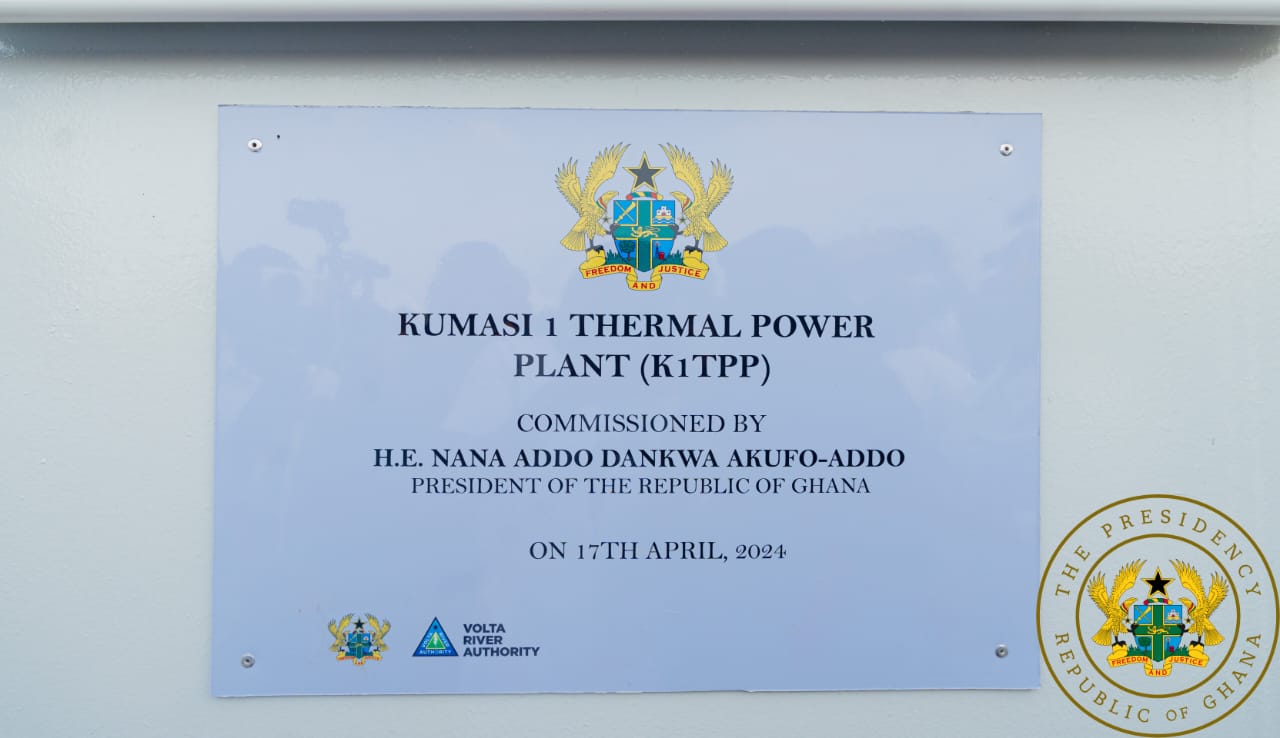
Whilst acknowledging the challenges that the people of Ashanti Region, and, indeed, of other parts of this country, have had to endure in very recent times over the supply of power, President Akufo-Addo was grateful for the patience of Nananom and the citizenry through the said difficult times and commended the Asantehene, who, graciously, intervened with the authorities of the Kwame Nkrumah University of Science and Technology (KNUST) to release a portion of their land for the construction of this power station and gas pipeline infrastructure, as well as, the Chiefs and people of Anwomaso, and, indeed, all stakeholders who contributed in diverse ways to make this project a reality.
In another show Gleefully, he was proud of the work undertaken by the Volta River Authority (VRA) in bringing the generating units and their associated equipment to Kumasi and commended the Board, Management and staff of VRA for successfully relocating and re-installing the gas turbine units, the related switchyard, balance of plant equipment, control room, cables and all other aspects of the power plant on their own.
“They have demonstrated that Ghanaian engineers, from a publicly-owned institution, can rise up to the task of finding engineering solutions to build our nation.”
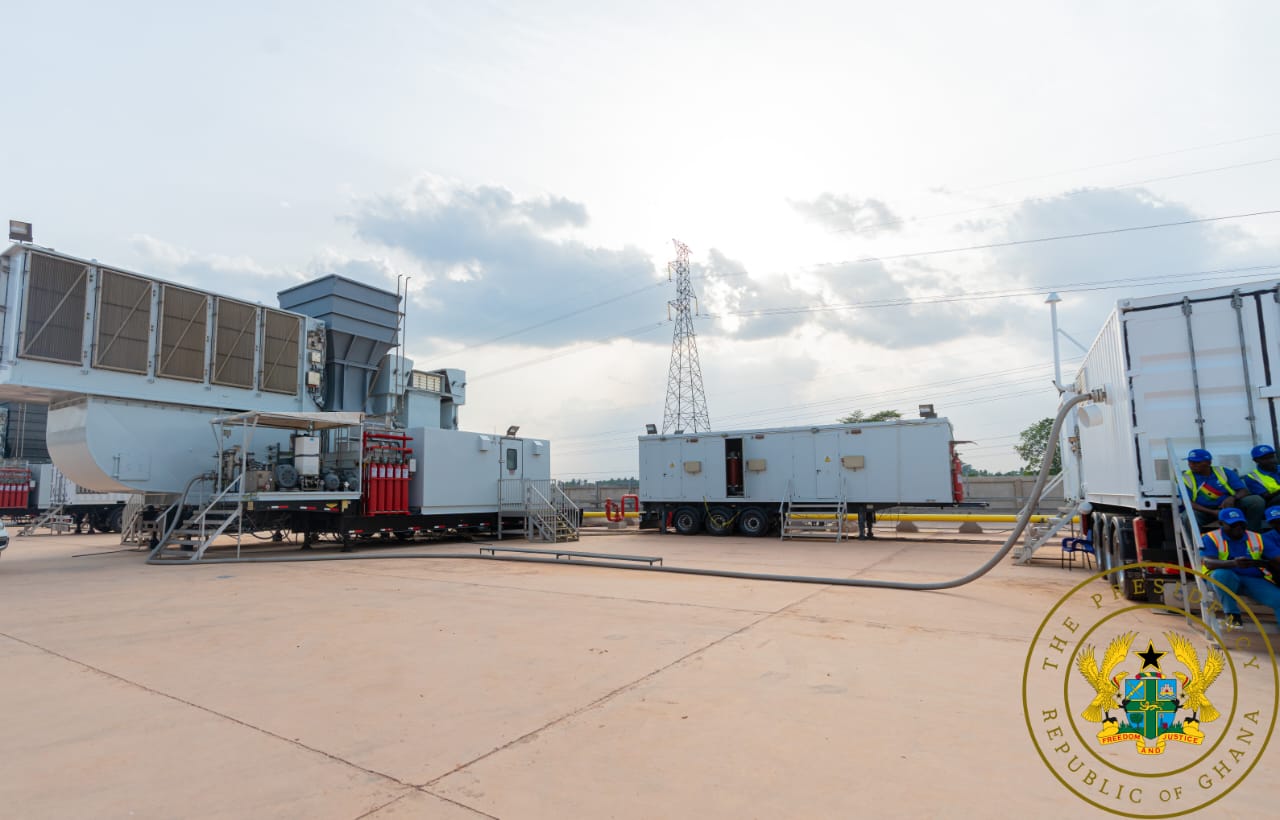
Congratulating GRIDCO, ECG and GNPC for the respective roles they have played in bringing this project to fruition, the President found it even more gratifying to note that “the gas transmission infrastructure for this power station was constructed from Prestea to Anwomaso through a collaboration between the Ghana National Petroleum Company (GNPC) and Genser Energy Ghana Limited, a dynamic Ghanaian-owned energy company.”
He concluded with an appeal to the investor community to take advantage of the improved electricity supply and put up viable commercial structures that would utilise the resources within the middle and northern belts to ramp up government’s industrialisation agenda, thereby accelerating the growth and development of the country.
